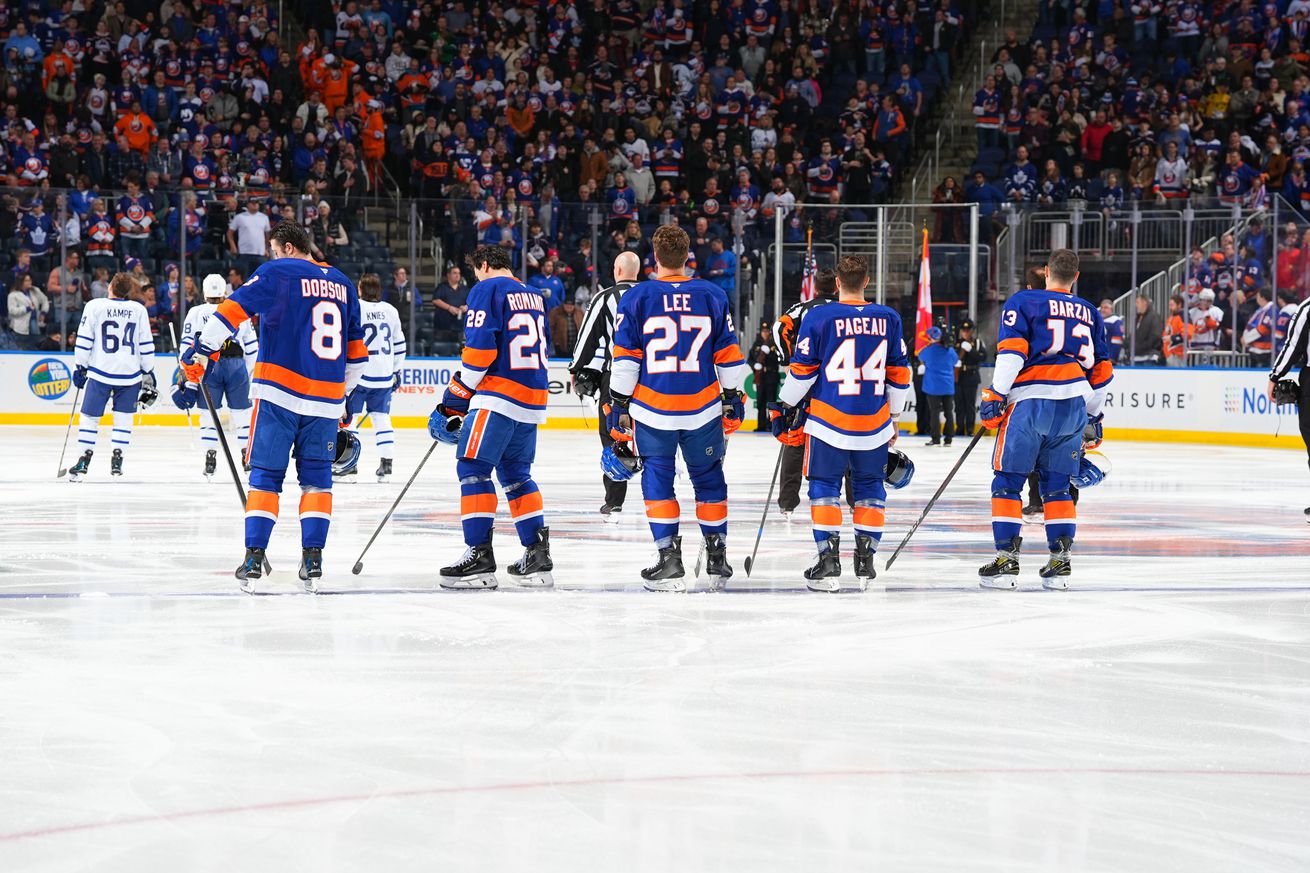
A new contributor makes her LHH debut.
Editor’s Note: This piece was written by a new contributor to Lighthouse Hockey, Analise Calleo, username Analise.Calleo. Much like the rest of us, she is a long-suffering Islanders fan. Below, she works through some of the consistent issues the Isles have had this season. Give a warm LHH welcome to our new friend!
It’s been a rocky first half for the New York Islanders this season, and as much as fans want to believe things will turn around, the struggles feel all too familiar.
Injuries, offensive inefficiency, and a stretched-thin defense are taking their toll, and the Islanders are once again fighting uphill in the Metropolitan Division. Here’s a closer look at some key statistics.
1. Injuries: Barzal, Pelech, and Duclair
Although forward Mathew Barzal has returned to the lineup, the Islanders’ offense has yet to gain significant momentum. After missing 21 games this season due to upper-body injuries, the 27-year-old center made his comeback for the New York Islanders against the Chicago Blackhawks.
Despite returning to the lineup, Barzal has scored in those nine games and has contributed only 10 points—mostly assists—so far. This marks a sharp decline from the 80 points he contributed to the team last year. This season, the Islanders’ power play percentage stands at 11.0%, ranking last in the league, compared to last year’s 20.3%.
Barzal isn’t the only player whose comeback has been quiet: defenseman Adam Pelech, 30, who had been on injured reserve since November 1, also rejoined the lineup but has yet to make a significant positive impact.
Forward Anthony Duclair, 29, has also returned from time out due to lower body injuries. The absence of Barzal, Pelech, and Duclair robbed the team of depth and forced players into unfamiliar roles. Once again, the team’s penalty kill is struggling, ranked last at 32nd with a 64.7% success rate. Despite his return, Pelech’s defensive reliability remains sorely missed.
With Barzal and Pelech returning to the lineup, the Islanders are starting to regain a more familiar team structure, which should help alleviate the burden on Anders Lee, 34, Bo Horvat, 29, and Jean-Gabriel Pageau, 32. These three have stepped up to fill in for their teammates, but the added responsibility has been a struggle. As Barzal and Pelech integrate back into the team, their return can provide much-needed relief, allowing Lee, Horvat, and Pageau to return to more manageable roles and give the Islanders a better chance to find their offensive rhythm.
Neither Barzal nor Pelech has contributed significantly yet, and the team’s offensive struggles persist, with the Islanders still averaging just 2.65 goals per game, ranking second-last in the Eastern Conference.
Team Metrics, 2023-24
- Power play: 20.23%
- Penalty kill: 84.7%
- Goals per game: 2.85
Team Metrics, 2024-25
- Power play: 11.0%
- Penalty kill: 64.7%
- Goals per game: 2.65
The result? A lot of scrambling and a lot of praying. Barzal’s chemistry with Duclair and center Horvat looked promising in early games, but the Islanders are left leaning too heavily on veterans like forwards Kyle Palmieri and Lee, who can’t do it all. With Barzal and Pelech back, the team is slowly getting closer to a more balanced lineup, but the pressure on the veterans remains as the offensive struggles continue.
2. Shot Trouble: Plenty of Attempts, Not Enough Goals
Here’s an interesting stat: Horvat had a shooting percentage of 13.3% last year, and this season it’s currently at 10.5%. The one player who has been hot is Lee, whose percentage is 15.0%. The team is generating shots, but they’re still struggling to convert those opportunities into goals; to wit, the team shooting percentage this season is 9.1%, compared to last season’s 9.9%. As we’ve seen, it’s just not enough.
Palmieri has stepped up with 26 points so far, but the Islanders’ lack of scoring depth is painfully obvious. The problem wasn’t just the injured players—it’s the guys who are playing but failing to convert opportunities.
Without consistent offensive production, the Islanders simply can’t compete with teams like the New Jersey Devils (25-15-3) or Carolina Hurricanes (24-14-2), who are leaving them behind in the standings.
3. Defense: Overworked and Understaffed
On the blue line, it’s been a “next man up” mentality—because it has to be. When defenseman Alexander Romanov returned to the lineup on November 19 after missing seven games with an upper-body injury, the Islanders began to regain some stability.
With Romanov’s absence earlier, defensemen like Noah Dobson, 24, and Ryan Pulock, 30, were logging huge minutes (Dobson has averaged over 25 minutes per game). While Dobson has been solid defensively despite some notable gaffes, he couldn’t cover all the gaps left by injured teammates.
Before his recent injury, defenseman Isaiah George was emerging as a bright spot. The 20-year-old rookie has been thrown into the deep end, and he’s holding his own. In his first NHL debut against the Pittsburgh Penguins, he logged 15:41 of ice time in a 4-3 shootout win. In his second game against the Ottawa Senators, he played 23:49 minutes alongside Noah Dobson, contributing to a 4-2 victory—though leaning on a rookie this much speaks volumes about the Islanders’ predicament.
Can They Turn It Around?
There is hope, despite the record. The team has 37 points so far (27th in the league). However, their special teams remain a glaring weakness, with the team placing last in the league with a power play conversion rate of just 12.2% and a penalty kill success rate of 64.7%. They’ve also struggled to maintain leads, frequently faltering in the third period.
But they’ll need more than that to climb out of this hole. Cleaning up blown leads, fixing their penalty kill, and getting more consistent scoring are non-negotiables if they want to make the playoffs.
If the Islanders want to avoid a season of heartbreak, they need answers. Fast.
